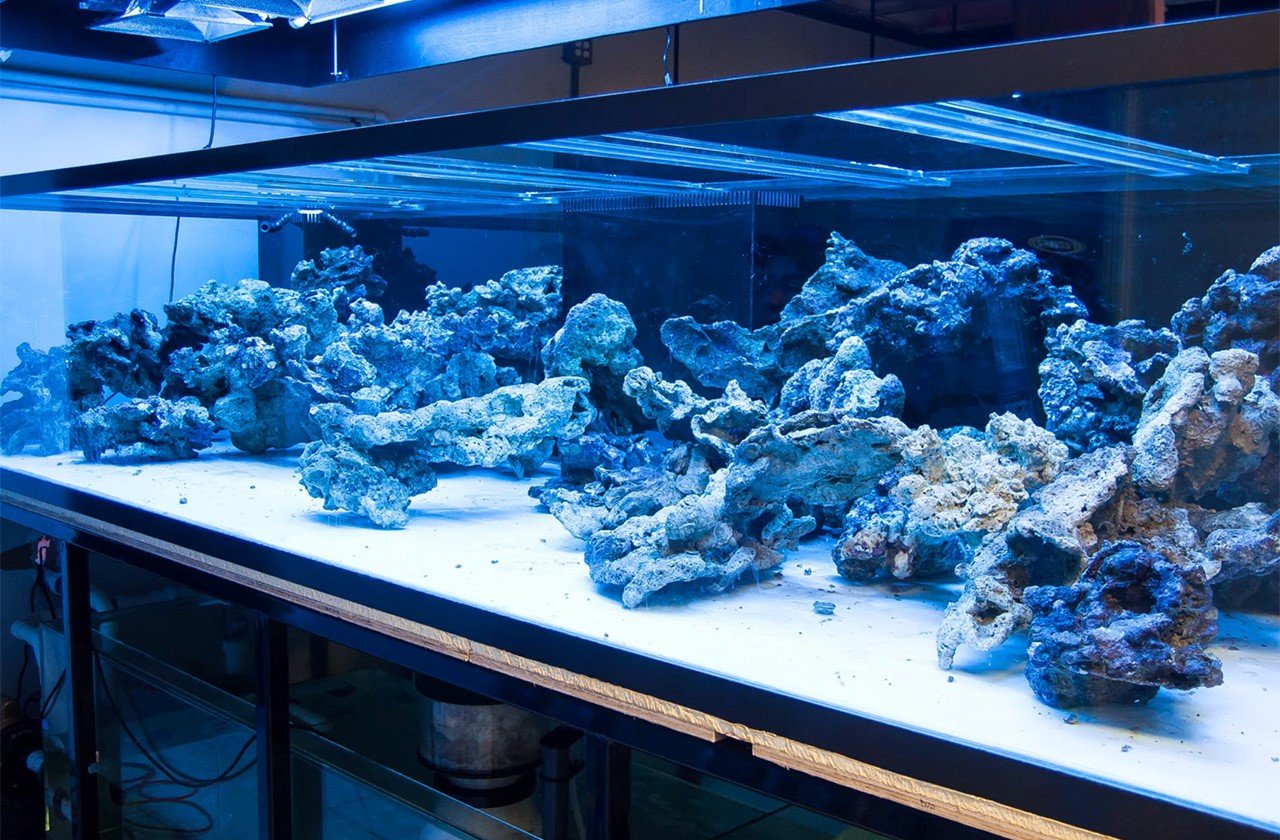Ok the verge of
Navigation
Install the app
How to install the app on iOS
Follow along with the video below to see how to install our site as a web app on your home screen.
Note: This feature may not be available in some browsers.
More options
You are using an out of date browser. It may not display this or other websites correctly.
You should upgrade or use an alternative browser.
You should upgrade or use an alternative browser.
World Wide Corals Tax Craze LIVE SALE! Up to 80% OFF!
Users Who Are Viewing This Thread (Total: 1, Members: 0, Guests: 1)
Almost

Can you smell what the rock is cooking in terms of your cultivation of bacteria in your tank?
Ever wonder what bacterial bounty may be in store for your reef?
Well look no further, the megaminds @WWC have you covered:

Understanding Cured vs. Uncured Live Rock

Live rock is essential to any beautiful, thriving saltwater aquarium ecosystem. In fact, it is the key to developing the foundation of this environment and making it the most natural for the organisms living in it. Contrary to the name, live rock is not actually living at all. They’re fragmented sections of dead coral reefs that have broken off under intense pressure from the ocean. Though they’re no longer full of vibrant color, these rocks make wonderful homes for small invertebrates, new corals, and bacteria. But this is not all there is to know—it is crucial for beginner aquarium enthusiasts to understand the difference between cured and uncured live rock in order to use them properly.
Natural Cured Live Rock
Cured live rock means it has been put through the process of acclimation to the living conditions of a home. The rock itself cannot die, but the rich supply of organisms inside it can begin to deteriorate, resulting in the release of toxic chemicals if it is taken out of the water too long at this point. The process also hardens the live rock and makes it more durable for withstanding the new tank conditions. Purchasing cured live rock when starting a saltwater aquarium can jump start your cycle and allow you to add fish, corals, and other invertebrates sooner. Some cured live rock though can come with hitchhikers, parasites, and nuisance algae if you are not careful where you source it from, causing a lot of headaches down the road.Man-made Cured Live Rock
Just like natural cured live rock, man-made cured live rock is ready to go to start a saltwater aquarium off quickly. But unlike natural cured live rock, with man-made live rock you do not have to worry about hitchhikers, parasites, and nuisance algae. The rock is created and cured in a controlled environment away from pests. The downside to man-made rock is it does not have as natural of a look and provide the same level of porous surface for organism and bacteria to grow as natural rock does. The hobby has shown over the years that man-made rock is just as good biologically for creating a saltwater aquarium as natural rock.Uncured Live Rock & Dry Rock
Uncured live rock, on the other hand, hasn’t been put through the curing process, so it still contains most of the organisms it had when it was harvested only now they are mostly dead. It therefore runs the risk of contaminating your ecosystem once inside your tank. If you choose to do so, make sure you acclimate the live rock before introducing any other lifeforms. This will ensure you have time to take control of the tank’s chemical levels and visually inspect the rock before adding other organisms.Even with the most beautiful live rock in your tank, it pales in comparison to the shapes and colors of live coral. We at World Wide Corals recommend purchasing vividly colored corals and incorporating them into your live rock. Our online stock is filled with many LPS and SPS corals for you to choose from.
Hitting
At 799 we go to sleep lol. Troops i need you guys to be here at 7:30 am est musaabi thats 4:30am for you friend


400x2=800
Love this
Can you smell what the rock is cooking in terms of your cultivation of bacteria in your tank?
Ever wonder what bacterial bounty may be in store for your reef?
Well look no further, the megaminds @WWC have you covered:

Understanding Cured vs. Uncured Live Rock

Live rock is essential to any beautiful, thriving saltwater aquarium ecosystem. In fact, it is the key to developing the foundation of this environment and making it the most natural for the organisms living in it. Contrary to the name, live rock is not actually living at all. They’re fragmented sections of dead coral reefs that have broken off under intense pressure from the ocean. Though they’re no longer full of vibrant color, these rocks make wonderful homes for small invertebrates, new corals, and bacteria. But this is not all there is to know—it is crucial for beginner aquarium enthusiasts to understand the difference between cured and uncured live rock in order to use them properly.
Natural Cured Live Rock
Cured live rock means it has been put through the process of acclimation to the living conditions of a home. The rock itself cannot die, but the rich supply of organisms inside it can begin to deteriorate, resulting in the release of toxic chemicals if it is taken out of the water too long at this point. The process also hardens the live rock and makes it more durable for withstanding the new tank conditions. Purchasing cured live rock when starting a saltwater aquarium can jump start your cycle and allow you to add fish, corals, and other invertebrates sooner. Some cured live rock though can come with hitchhikers, parasites, and nuisance algae if you are not careful where you source it from, causing a lot of headaches down the road.
Man-made Cured Live Rock
Just like natural cured live rock, man-made cured live rock is ready to go to start a saltwater aquarium off quickly. But unlike natural cured live rock, with man-made live rock you do not have to worry about hitchhikers, parasites, and nuisance algae. The rock is created and cured in a controlled environment away from pests. The downside to man-made rock is it does not have as natural of a look and provide the same level of porous surface for organism and bacteria to grow as natural rock does. The hobby has shown over the years that man-made rock is just as good biologically for creating a saltwater aquarium as natural rock.
Uncured Live Rock & Dry Rock
Uncured live rock, on the other hand, hasn’t been put through the curing process, so it still contains most of the organisms it had when it was harvested only now they are mostly dead. It therefore runs the risk of contaminating your ecosystem once inside your tank. If you choose to do so, make sure you acclimate the live rock before introducing any other lifeforms. This will ensure you have time to take control of the tank’s chemical levels and visually inspect the rock before adding other organisms.
Even with the most beautiful live rock in your tank, it pales in comparison to the shapes and colors of live coral. We at World Wide Corals recommend purchasing vividly colored corals and incorporating them into your live rock. Our online stock is filled with many LPS and SPS corals for you to choose from.
At 799 we go to sleep lol. Troops i need you guys to be here at 7:30 am est musaabi thats 4:30am for you friend

- Joined
- Mar 23, 2018
- Messages
- 182
- Reaction score
- 234
The dollar tree gel is what Than at Tidal Garden uses.I was at the dollar store and remember someone saying that there stuff works just as well
I fell like the 28 hour live sale never ended

- Joined
- Feb 8, 2020
- Messages
- 802
- Reaction score
- 607
I need to clean up my coral QT before my order arrives
I’ll sleep when I’m dead
@millticket wins hands down
Can you smell what the rock is cooking in terms of your cultivation of bacteria in your tank?
Ever wonder what bacterial bounty may be in store for your reef?
Well look no further, the megaminds @WWC have you covered:

Understanding Cured vs. Uncured Live Rock

Live rock is essential to any beautiful, thriving saltwater aquarium ecosystem. In fact, it is the key to developing the foundation of this environment and making it the most natural for the organisms living in it. Contrary to the name, live rock is not actually living at all. They’re fragmented sections of dead coral reefs that have broken off under intense pressure from the ocean. Though they’re no longer full of vibrant color, these rocks make wonderful homes for small invertebrates, new corals, and bacteria. But this is not all there is to know—it is crucial for beginner aquarium enthusiasts to understand the difference between cured and uncured live rock in order to use them properly.
Natural Cured Live Rock
Cured live rock means it has been put through the process of acclimation to the living conditions of a home. The rock itself cannot die, but the rich supply of organisms inside it can begin to deteriorate, resulting in the release of toxic chemicals if it is taken out of the water too long at this point. The process also hardens the live rock and makes it more durable for withstanding the new tank conditions. Purchasing cured live rock when starting a saltwater aquarium can jump start your cycle and allow you to add fish, corals, and other invertebrates sooner. Some cured live rock though can come with hitchhikers, parasites, and nuisance algae if you are not careful where you source it from, causing a lot of headaches down the road.
Man-made Cured Live Rock
Just like natural cured live rock, man-made cured live rock is ready to go to start a saltwater aquarium off quickly. But unlike natural cured live rock, with man-made live rock you do not have to worry about hitchhikers, parasites, and nuisance algae. The rock is created and cured in a controlled environment away from pests. The downside to man-made rock is it does not have as natural of a look and provide the same level of porous surface for organism and bacteria to grow as natural rock does. The hobby has shown over the years that man-made rock is just as good biologically for creating a saltwater aquarium as natural rock.
Uncured Live Rock & Dry Rock
Uncured live rock, on the other hand, hasn’t been put through the curing process, so it still contains most of the organisms it had when it was harvested only now they are mostly dead. It therefore runs the risk of contaminating your ecosystem once inside your tank. If you choose to do so, make sure you acclimate the live rock before introducing any other lifeforms. This will ensure you have time to take control of the tank’s chemical levels and visually inspect the rock before adding other organisms.
Even with the most beautiful live rock in your tank, it pales in comparison to the shapes and colors of live coral. We at World Wide Corals recommend purchasing vividly colored corals and incorporating them into your live rock. Our online stock is filled with many LPS and SPS corals for you to choose from.

Can you smell what the rock is cooking in terms of your cultivation of bacteria in your tank?
Ever wonder what bacterial bounty may be in store for your reef?
Well look no further, the megaminds @WWC have you covered:

Understanding Cured vs. Uncured Live Rock

Live rock is essential to any beautiful, thriving saltwater aquarium ecosystem. In fact, it is the key to developing the foundation of this environment and making it the most natural for the organisms living in it. Contrary to the name, live rock is not actually living at all. They’re fragmented sections of dead coral reefs that have broken off under intense pressure from the ocean. Though they’re no longer full of vibrant color, these rocks make wonderful homes for small invertebrates, new corals, and bacteria. But this is not all there is to know—it is crucial for beginner aquarium enthusiasts to understand the difference between cured and uncured live rock in order to use them properly.
Natural Cured Live Rock
Cured live rock means it has been put through the process of acclimation to the living conditions of a home. The rock itself cannot die, but the rich supply of organisms inside it can begin to deteriorate, resulting in the release of toxic chemicals if it is taken out of the water too long at this point. The process also hardens the live rock and makes it more durable for withstanding the new tank conditions. Purchasing cured live rock when starting a saltwater aquarium can jump start your cycle and allow you to add fish, corals, and other invertebrates sooner. Some cured live rock though can come with hitchhikers, parasites, and nuisance algae if you are not careful where you source it from, causing a lot of headaches down the road.
Man-made Cured Live Rock
Just like natural cured live rock, man-made cured live rock is ready to go to start a saltwater aquarium off quickly. But unlike natural cured live rock, with man-made live rock you do not have to worry about hitchhikers, parasites, and nuisance algae. The rock is created and cured in a controlled environment away from pests. The downside to man-made rock is it does not have as natural of a look and provide the same level of porous surface for organism and bacteria to grow as natural rock does. The hobby has shown over the years that man-made rock is just as good biologically for creating a saltwater aquarium as natural rock.
Uncured Live Rock & Dry Rock
Uncured live rock, on the other hand, hasn’t been put through the curing process, so it still contains most of the organisms it had when it was harvested only now they are mostly dead. It therefore runs the risk of contaminating your ecosystem once inside your tank. If you choose to do so, make sure you acclimate the live rock before introducing any other lifeforms. This will ensure you have time to take control of the tank’s chemical levels and visually inspect the rock before adding other organisms.
Even with the most beautiful live rock in your tank, it pales in comparison to the shapes and colors of live coral. We at World Wide Corals recommend purchasing vividly colored corals and incorporating them into your live rock. Our online stock is filled with many LPS and SPS corals for you to choose from.

Millticket king of the spam@millticket wins hands down

Absolutelynext job for me is the @WWC blog hype man... i've found my calling
Similar threads
- Replies
- 764
- Views
- 73,018
- Replies
- 4,313
- Views
- 447,679
- Replies
- 1,072
- Views
- 100,571
- Replies
- 3,178
- Views
- 50,276
- Replies
- 838
- Views
- 15,304
New Posts
-
-
EMERGENCY Brand new clown fish, suddenly lethargic?
- Latest: vetteguy53081
-









